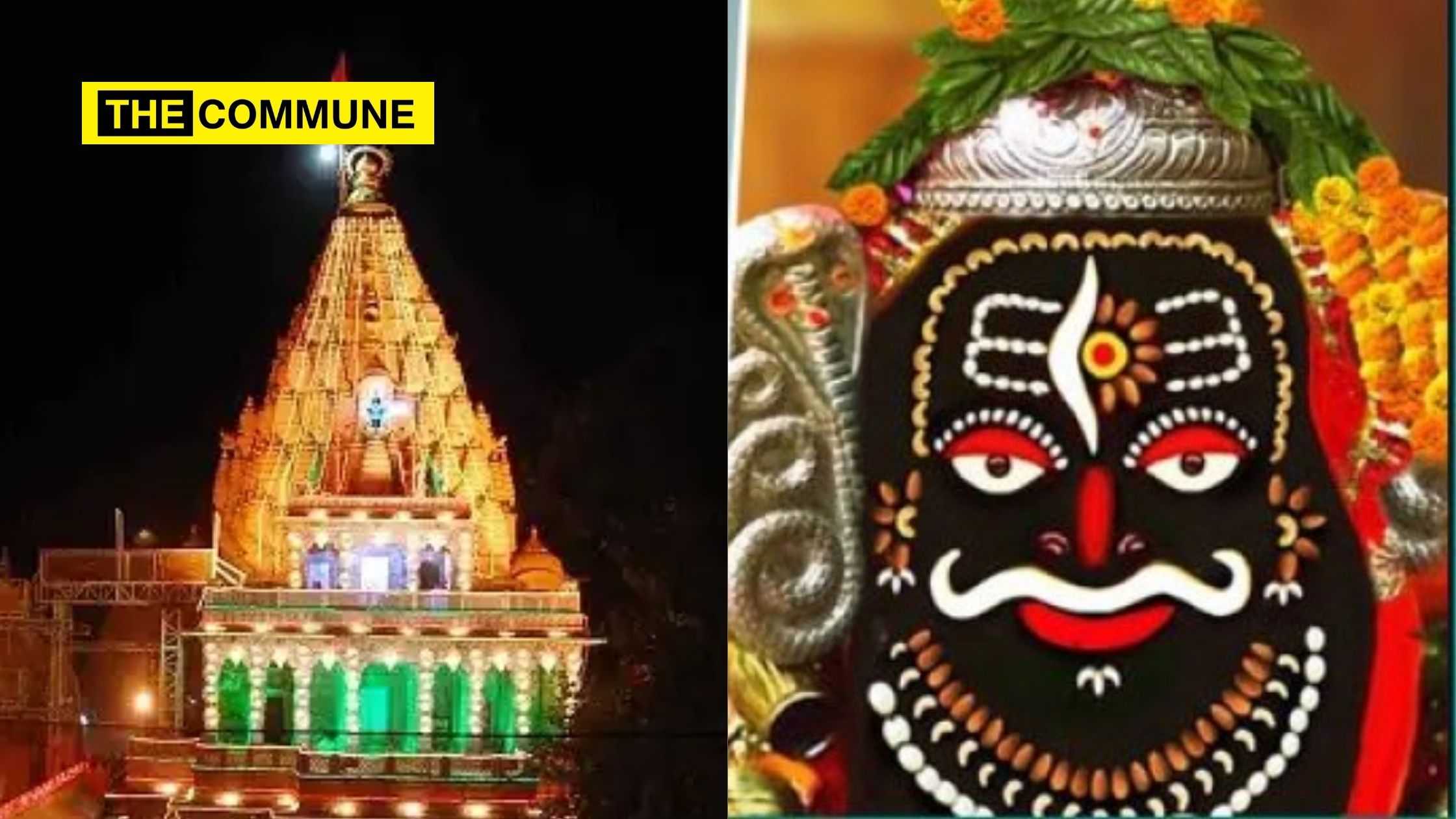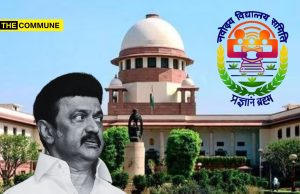
Following the Vishwanath temple corridor in Varanasi and the Kedarnath shrine in Uttarakhand, the Mahakal temple in Ujjain is the third ‘jyotirlinga’ site to see a major renovation and expansion exercise. The proposed ₹850 Cr Mahakal corridor is four times the size of the Kashi Vishwanath corridor, which the PM had inaugurated last year. The first phase of the Mahakal Lok corridor has been developed for ₹316 crore, with an aim to decongest the area and focus on conservation and restoration of heritage structures.
Here’s the history of the ancient Mahakal “Lingam”, the temple complex and some related information, from various sources.
Why Is Mahakaleshwar Special?
The Mahakal Temple in Ujjain, Madhya Pradesh holds a special significance for Hindus. The Puranas say that Lord Shiva pierced the world as an endless pillar of light, called the jyotirlinga. There are 12 jyotirlinga sites in India, considered a manifestation of Lord Shiva. Of the 12 jyotirlinga sites in India, Mahakal is the only jyotirlinga facing the south, while all the others face east, hence the name of the main idol “Dakshinamukhi”. The Sanskrit word “Kala” refers to both Time and Death. Shiva, as one who conquered both (one, who is beyond time and death) was bestowed with the name, Mahakala. The direction of death is believed to be the South and people worship Mahakaleshwar to prevent an untimely death.
It is also note worthy because it is the only Jyothirlingam of the twelve, that is believed to be “Swayambhu” or self-manifested , self-existing. It is claimed to be a naturally-arisen lingam, a self manifested deity, as opposed to being made by human hands.
Another special aspect of the temple is that the Mahakaleshwar is the only jyotirling facing towards the south as all other jyotilings face towards east. It is also one of the shrines of the Vaippu Sthalams (temples mentioned in Tevaram) sung by Tamil Saivite Nayanar Appar.
The Puranas mention that the Mahakal “jyotirlinga” of the temple was built by the Creator of the Universe, Lord Brahma himself. It is believed that the ‘Jyotirlingam’ was found inside the Koti Teerth Kunda in the Mahakal campus and a temple was first constructed by King Vikramaditya whose capital was Ujjain.
The story of Lord Shiva’s presence in Ujjain in the form of the Mahakal, talks of an Ujjain king, Chandrasena, an ardent Shiva devotee. His enemies captured the city but Lord Shiva came to the aid of his Ujjain devotees in his Mahakala form and destroyed the enemies of King Chandrasena. Upon the request of his devotees, Shiva agreed to reside in the city, become its chief and protect His devotees. Shiva resides here in light form as Mahakala in a Lingam , that was formed on its own from the powers of Shiva and his consort, Parvati.
The larger temple complex for the Jyothirlinga was built in the 6th century ACE by Kumarasena, the son of a former king of Ujjain, Chandpradyot. It was re-constructed in the 12th century under King Udayaditya and King Naravarman and was a popular religious destination before its destruction by the Muslim armies of Sultan Iltutmish.
When Islamic Invaders Razed Down The Temple
The temple complex was destroyed by the Muslim Turkic slave king, Shams-ud-din Iltutmish during his raid of Ujjain in 1234-5 CE. The Jyotirlinga was dismantled and believed to be have been thrown into a nearby ‘Kotiteerth Kunda’, a pond neighboring the temple. The Jaladhari (a structure supporting the Lingam) was stolen during the invasion. The temple was damaged and many idols were defaced by Iltutmish and his army.
The Tabakat-I-Nasiri, an elaborate history written in Persian by Minhaj-i-Siraj Juzjani mentions that Iltutmish took the idols from the temple to Delhi, broke them and placed them at the entrance of the mosque for it to be trampled upon.
A recent 2021 news report of an archaeological excavation at the Mahakal temple complex, claimed to have discovered several mutilated idols and defaced heads, dating back to eleven hundred years ago, which coincides with historical accounts of Iltumish’s destruction and plunder. The excavation also reported the surprise discovery of the remains of an ancient wall purportedly 2100 years old, reputed to have been built by King Vikramaditya (375-415 CE).
In 1734, Maratha ruler Ranoji Shinde’s minister Ramchandrababa Sukhtankar built the present day temple after razing down the mosque built there by Iltutmish. The Marathas continued to take care of the temple’s maintenance into the 19th century. Its marble walkways were restored by the Scindias in the 19th century.
The Buddhism Connect
Mahākāla is a deity common to Hinduism and Tantric Buddhism. In Buddhism, Mahākāla is regarded as the sacred Dharmapāla (“Protector of the Dharma”), while in Hinduism, Mahākāla is a fierce manifestation of the Hindu god Shiva and the consort of the goddess Mahākālī. Mahākāla also appears as a protector deity in Vajrayana, Chinese Esoteric Buddhism and Tibetan Buddhism. He is known by different names in Mandarin and Cantonese, in Korean, in Vietnamese, and in Japanese.
The Mahakal temple finds a mention in several ancient Indian poetic texts, including that of the great Sanskrit poet Kalidasa’s work, Meghadutam (Purva Megha) composed in the 4th century. He describes the temple as one with a stone foundation, with its ceiling on wooden pillars. Kalidasa mentions the religious rites of the temple including the “nada-aradhana”, the performance of art and dance, during the evening rituals.
The Deity Of Time
The Mahakal’s abode, Ujjain (Avantika, of ancient times ) was an important center of learning for Hindu scriptures, in the 6th and 7th centuries BC. Later, astronomers and mathematicians such as Brahmagupta and Bhaskaracharya made Ujjain their home. Per the Surya Siddhanta, one of the earliest available texts on Indian astronomy dating back to the 4th century, Ujjain is geographically situated at a spot where the zero meridian of longitude and the Tropic of Cancer intersect. In keeping with this theory, many Ujjain temples are in some way or the other, connected to concepts of time and space, both physically and philosophically. In the 18th century, an observatory was built here by Maharaja Jai Singh II, known as the Vedh Shala or Jantar Mantar, comprising 13 architectural instruments to measure astronomical phenomena.
The Mahakal in Ujjain dominates the life of the city and its people, even in the midst of the busy routine of modern preoccupations, and provides an unbreakable link with ancient Hindu traditions. An ancient Swayambhu jyothirlinga as well as Shaktipeeth temple of significance, revered in other nations and across religious traditions; a temple that has weathered the ravages of time, resisted Islamic invasions and continues to offer solace to millions of Hindu devotees now being given a boost by PM Modi’s vision of a spiritually vibrant India. The renovated Mahakal temple corridor, promises to be a pilgrim’s delight.
Click here to subscribe to The Commune on Telegram and get the best stories of the day delivered to you personally.




